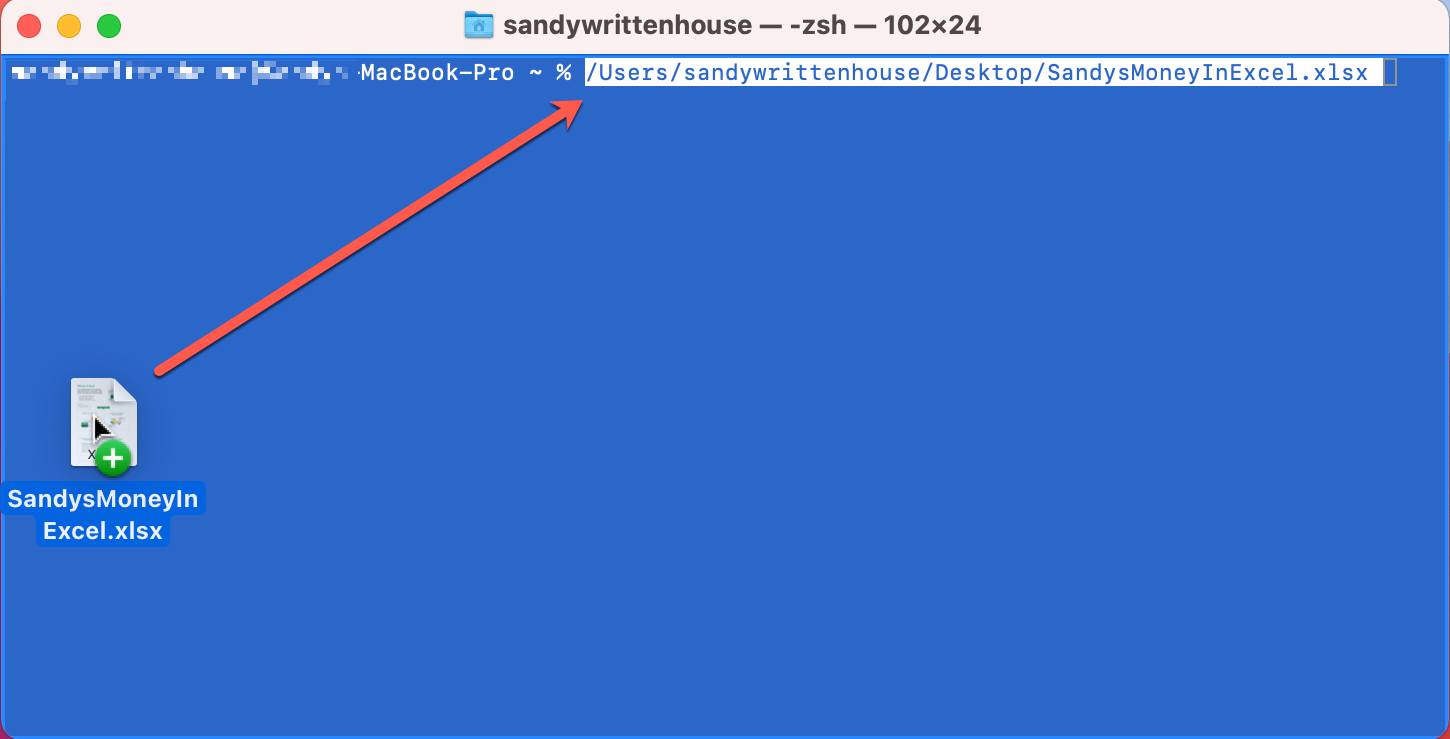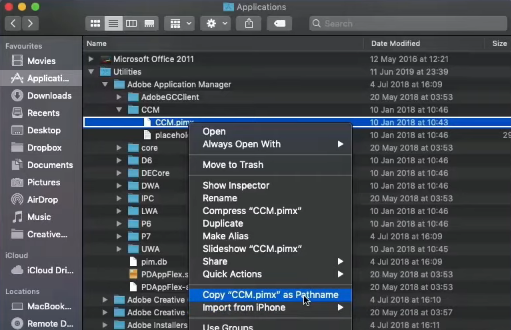
If you only have a relative URL but still simply want to get the file name, use the second argument of the URL constructor to pass a base origin. pop() if you always want the last non-empty part of the path (e.g.
#Mac get file path name how to#
How to copy the file path Copying any text from the previous window isn’t easy, obviously. Long press the section called Where, which is the file path, and tap Copy. It uses pattern matching to copy and transform the name, and/or the path, and/or the parent folder path of the dropped file. It works with any kind of file (applications, documents, folders. I dragged the file to Terminal to get the path name, but it does not seem to be correct. Get File Path allows users to copy to the clipboard the path of a file or folder dropped on it, after the automatic application of various programmable transformations. Here are a couple of the ones I have tried. Look up what’s written under Where: The selected area shows the enclosed folder of your document. File information is shown in this area, like creation/modified/last opened dates. Ive tried using a number of different path names, but none of them work.
#Mac get file path name mac#
`file://` or ` console.log(getFileName("file://C:\\Documents and Settings\\img\\recycled log.jpg")) // "recycled%20log.jpg"Ĭonsole.log(decodeURIComponent(getFileName("file://C:\\Documents and Settings\\img\\recycled log.jpg"))) // "recycled log.jpg"Ĭonsole.log(getFileName("")) // "file.png". How to get a file path on a Mac To get a basic understanding of where your file is located, just right-click the file. You will see the new command that has appeared in the context menu Copy. Now, Control + Click the file you want the location for. URLs need to have the scheme portion, e.g. Interestingly, the file path will immediately appear underneath the Finder window. I have MacPorts coreutils +with_default_names installed, which explains that I picked up gsleep and not /bin/sleep.Const getFileName = (fileName) => new URL(fileName).pathname.split("/").pop() Using lsof shows which binary it ran: $ lsof -p 79462 | awk '$4 = "txt" '

For example, going into one shell and running $ sleep 1234567Īnd using ps in another shell only shows how it was launched: $ ps auxww|grep 'leep'īlair 79462 0.0 0.0 600908 744 s011 S+ 11:17PM 0:00.00 sleep 1234567 Instead, you must prefix the path with the file specifier at the time the file is targeted by a command, as shown in Listing 15-8. set theFile to file 'Macintosh HD:Users:yourUserName:Desktop:My File.txt'. Then click Copy as Pathname menu item in the popup menu list. Listing 15-8 AppleScript: Example of incorrect usage of a file object specifier. I dragged the file to Terminal to get the path name, but it does not seem to be correct. I've tried using a number of different path names, but none of them work. Right-click one folder or file name in the above macOS Finder path bar. I'm using an application on my mac and need to specify where on my hard drive the application should save the output. Now you can find a path bar at the bottom of the macOS Finder window. Click View > Show Path Bar menu item in the Finder top menu bar. This technique works if the process was launched using an absolute or relative path. Open a macOS Finder window and select the file or folder. So dynamically we can get the file path name for any systems by just reading the physical path. So below the logical name of the physical path DIRSAPUSERS is read. Lets see the definition of both the routines. You can see that the shell is using /bin/bash. To define the file path PERFORM definepath. This technique works if the process was launched using an absolute or relative path. For example, in the shell to see what binary the shell is, use the shell's PID in place of $$. When you select that option, the file or folder path will be placed on your clipboard.

Hold down the Option key and you’ll see Copy change to Copy name as Pathname. Open Finder and right-click the file or folder to display the context menu. One way of getting the process's binary location is to use lsof and grep for the first txt segment. Another easy way to obtain a file path on Mac is with the context menu in Finder.


 0 kommentar(er)
0 kommentar(er)
